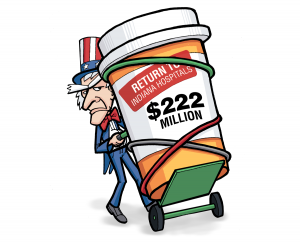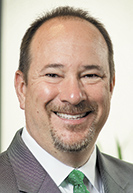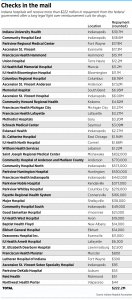Subscriber Benefit
As a subscriber you can listen to articles at work, in the car, or while you work out. Subscribe Now
It’s a concise program nickname, 340B, just three numerals and a letter. But to U.S. hospitals, it’s a drug program worth tens of billions of dollars a year.
And now, thanks to a recent U.S. Supreme Court decision, it’s about to pay off for hospitals again.
The 340B shorthand stands for the section of the Public Health Service Act set up in 1992 to help hospitals buy drugs at a deep discount for low-income or uninsured patients in outpatient clinic settings.
For more than three decades, thousands of hospitals have provided drugs, mostly injections and infusions, to treat a wide range of ailments, from asthma and arthritis to muscle swelling and kidney disease.
But the program has taken a sharp turn in recent years. In 2018, the U.S. Department of Health and Human Services, which administers the program, cut reimbursement payments to participating hospitals by nearly 30%. That prompted the hospital industry to file a series of suits and appeals in federal court on behalf of its members.
And now, after a bruising, five-year fight that went all the way to the U.S. Supreme Court, hospitals across Indiana and the nation are in line for a huge payday.
The Supreme Court ruled unanimously last year that HHS unlawfully cut the payments to hospitals without following proper procedure, including conducting a survey of the hospitals’ acquisition cost of the drugs from pharmaceutical drugmakers.
And now, thousands of U.S. hospitals are set to recoup more than $9 billion under a proposed remedy that the federal agency rolled out this summer.
As part of that, more than 40 Indiana hospitals stand to collect a total of $222.2 million in lump-sum repayments to make up for what they lost over the past five years.

At first blush, it seems like a lot of money to fall into the hospitals’ laps. But the Indiana Hospital Association insists it’s not a bonanza.
“This is not a windfall to hospitals receiving these payments,” said Brian Tabor, the association’s president. “This is just making up for cuts that should never have taken place.”
The various repayment amounts to individual hospitals were determined by calculating the difference between what the hospital was paid for 340B drugs during the nearly five-year period of the rate cuts and what they would have been paid had the rate cuts for 340B drugs not been applied.
Hospitals that dispensed more drugs through the program stand to reap a higher amount of repayments from the federal government.
Wide range of repayments
In Indiana, the payments for hospitals range from relative pocket change ($44 for Northwest Health-Porter Hospital in Valparaiso) to hefty, eight-digit sums ($39.7 million for Indiana University Health’s two combined downtown hospitals, Methodist and University), according to figures provided by the Indiana Hospital Association, based on HHS calculations.
IU Health, the largest hospital system in Indiana, also stands to receive repayments for its hospitals in Muncie, Bloomington, Carmel, Avon and Lafayette, for a total of nearly $64 million, representing more than one-quarter of the total amount earmarked for all Indiana hospitals.
IU Health said payments are designed to “repay inappropriate Medicare reimbursement cuts” that were implemented on hospitals five years ago.
“These dollars will help cover the significant labor, drug and supply inflationary pressures that the health system is experiencing while also reducing its prices as a percentage of Medicare and providing high-quality care to all of our patients regardless of income level or insurance coverage,” IU Health said in an email to IBJ.
Another large hospital system, Ascension St. Vincent, is set to receive about $31 million for hospitals in Indianapolis, Evansville and Anderson that participated in the discount drug program.
The Indianapolis-based hospital system said the program has been “extremely valuable” in helping it stretch resources to help patients and communities.
“In Indiana, the 340B Program helped support numerous charity care and community benefit programs, including our Joshua Max Simon Primary Care Center, which provides access to significantly discounted prescription medications and primary care services for primarily uninsured and underinsured patients; two Dispensary of Hope locations serving uninsured populations with free medication across the state; our community-based pharmacy residency program; and more,” Ascension St. Vincent said in an email.
Even midsized and smaller hospitals that participated in the program are due to get a repayment.
Eskenazi Health, a safety-net hospital located on the western edge of downtown, will receive about $2.27 million in repayments. It said the program has allowed it to provide necessary medications to patients regardless of ability to pay.
Eskenazi has used the savings from 340B for various community health programs, including women’s and children’s services, teen and adolescent care programs, and senior care programs.
Columbus Regional Health, based in Bartholomew County, is due to get about $8.7 million in repayments. It said it uses the funds to support “a variety of programs and services catered to our most vulnerable populations.”
That includes its primary care clinic for uninsured and underinsured residents, medication cost assistance and management assistance programs, and counseling services to patients with substance misuse disorders.
The program works by bringing together numerous industry players to serve low-income, underinsured and other “vulnerable populations.”
How the program started
Congress passed the 340B program to give more assistance to “covered entities”—often small county hospitals or inner-city clinics that helped patients left behind by bigger hospitals. The program was open to a specific set of hospitals that take care of a large number of low-income patients.
Under the program, drug manufacturers are required to provide drugs at a discount to so-called “safety-net hospitals” and community care organizations.

“It was intended to increase access and affordability for prescription drugs to vulnerable communities,” said David Blish, director of health care consulting at Katz Sapper & Miller, an Indianapolis-based accounting and consulting firm.
Hospitals and clinics that qualify for 340B status can buy the medicines from drugmakers at a deep discount, typically 20% to 50% under list price. The idea is to help the hospitals stretch their resources and serve needy patients.
Under the second part of the financial equation, the hospitals are then reimbursed at a higher rate by the federal government or commercial insurers and are allowed to keep the difference and use it for other programs, from prenatal care to longer hours at clinics.
For the 12 months ending June 30, 2021, discounted purchases across the U.S. under the 340B program reached a record $43.9 billion, up nearly 16% from a year earlier. It accounted for more than 7% of the overall U.S. drug market, according to estimates from the Health Resources and Services Administration.
Since 2014, purchases under the 340B program have tripled and are now almost as large as Medicaid’s outpatient drug sales.
Initially, the federal government reimbursed the hospitals the average sales price of each drug plus a markup of 6%. But over the years, that formula ran into some opposition.
“In some people’s eyes, the hospitals were reaping somewhat of a windfall from 340B because they were eligible to receive a discount on the purchase price and sell more or less at average sales price,” Blish said.
Eventually, Medicare and Medicaid officials began questioning the fairness of that system. And it concluded that eligible hospitals could still purchase drugs at a discount, but the reimbursement level would be less—much less.
Changing the formula
Beginning in 2018, it changed the formula. Instead of reimbursing hospitals average sales price plus 6%, it lowered it to average sales price minus 22.5%.
Nearly overnight, that represented a net change of 28.5% less that hospitals were getting reimbursed for the drugs, putting a squeeze on the amount of money that could direct to community-health programs.
“All of a sudden, you’re dropping covered outpatient drug reimbursement by about 30%, which was a shock to many hospitals,” said James Junger, an attorney at Hall, Render, Killian, Heath & Lyman, an Indianapolis-based law firm that specializes in health law.
“That’s when everyone lawyered up,” Blish added.
The American Hospital Association, a powerful industry lobby, challenged HHS in federal court, saying it did not follow the law by conducting a survey to see how much the hospitals were actually paying to acquire the drugs. The federal agency responded that it could vary the reimbursement rates under its authority and said it had acted legally.
The U.S. District Court for the District of Columbia rejected HHS’s argument and said it had acted outside its legal authority. The D.C. Court of Appeals reversed that ruling and upheld the federal agency’s reimbursement rates.
The case went to the Supreme Court, and in a 9-0 ruling, the court came down squarely on the side of the 340B hospitals.
“If HHS believes that this Medicare reimbursement program overpays 340B hospital, it may conduct a survey of hospitals’ acquisition costs to determine whether and how much the data justify varying the reimbursement rates by hospital group,” Justice Brett Kavanaugh wrote in the unanimous opinion.
The repayment plan has not yet been finalized and is still working its way through the notice and comment process at the Centers for Medicare and Medicaid Services. But barring an unexpected twist, the process is likely to wrap up by the end of this year, Junger said.
“If I had my preference, Congress would just pass a law to say what’s supposed to happen here rather than having to go through the rigmarole of notice and comment rule-making, which could be challenged,” Junger said.
American Hospital Association President CEO Rick Pollock said in a statement July 7 his members are gratified that hospitals will be repaid promptly with a single lump sum.
“After more than five years of litigation and a unanimous Supreme Court victory, the AHA is extremely pleased that 340B hospitals will finally be paid back what they deserve so they can continue providing care to their patients and communities, Pollock said
But even as this one thorny issue gets resolved, another one already is popping up.
The federal agency said it is required under the law to maintain so-called “budget neutrality”—or not running a deficit when it has to pay out higher amounts.
To make up for the billions of dollars it is repaying to 340B hospitals, the Centers for Medicare and Medicaid Services is proposing to reduce future outpatient drug and service reimbursements across the board by 0.5% for 16 years, starting in 2025.•
Please enable JavaScript to view this content.

